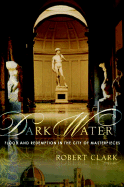

In interviews with those who lived through the flood and those who arrived to assist the city's recovery, Clark has gathered openhearted accounts that provide the necessary human dimension to the headline-grabbing stories of priceless masterpieces in peril. Overwhelmed by the very idea of the flood, he writes, "They hadn't reckoned with its power, energy or force: the weight of millions of gallons of water at sixty pounds to a mere square foot. Still less had they considered its residuum, its spent remains, the skin it sloughed off as it oozed away--muck, sewage, heating oil, and soil gathered from here to Falterona--which resembled nothing so much as merda, shit."
The heart of the book addresses the enormous amount of time, money and technical expertise required to salvage the treasures of Florence. The sheer number of damaged art works and books (including 321 panel paintings and 6,000 illuminated manuscripts) is mind-boggling. To illustrate the challenges Florence faced, Clark focuses on the 10-year-long restoration of The Crucifix (Crocifisso) by Cimabue (celebrated as "the first page of Italian art" by Giorgio Vasari in The Lives of the Artists) and contrasts it with the fate of Vasari's own The Last Supper. How we regard the choices of what is saved and what is sacrificed is profoundly personal, Clark concludes.
When Clark at last sees the restored Cimabue Crocifisso and Vasari's neglected The Last Supper (just beginning its restoration after 40 years), he is as overwhelmed as he was by the idea of the flood; his sense of devastation and ambivalence in their physical presence surprises him and further humanizes this monumental story of art saved from the grave and the people who were the rescuers.--John McFarland
Shelf Talker: Dark Water will bring great pleasure to lovers of Florence, art-conservation buffs and even aficionados of extreme weather.

